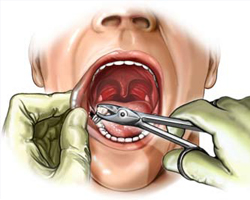
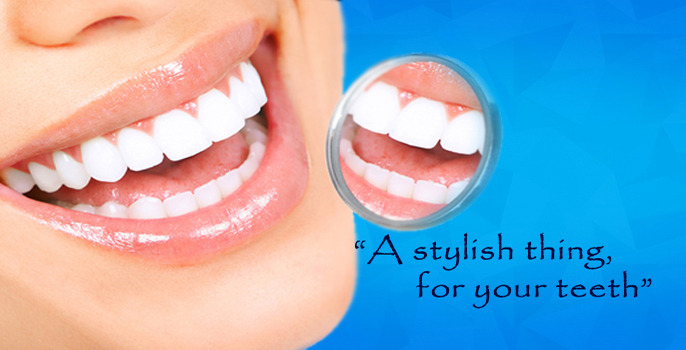
During root canal treatment, the inflamed or infected pulp is removed and the inside of the tooth is carefully cleaned and disinfected, then filled and sealed with a rubber-like material called gutta-percha. Afterwards, the tooth is restored with a crown or filling for protection. After restoration, the tooth continues to function like any other tooth.
Saving the natural tooth with root canal treatment has many advantages:
>>Efficient chewing.
>>Normal biting force and sensation.
>>Natural appearance.
>>Protects other teeth from excessive wear or strain.
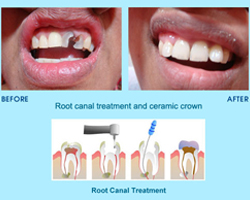
A crown is a tooth-shaped cap that is placed over a tooth. It is used to strengthen and protect your tooth structure. Most crowns are made of a hard, white substance to help them look natural.
A dental bridge covers or "bridges" the gap between missing teeth. After you lose a tooth, your dentist may suggest that you get a bridge. A bridge can keep your other teeth from moving out of place. Once a bridge is placed, it works just like your natural teeth.
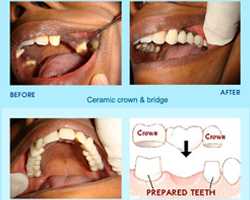
A filling is a material that your dentist uses to fill a cavity after he or she removes any tooth decay.
To fill a tooth, your dentist will:
Numb your teeth, gums, tongue, and surrounding skin. Your dentist will first put a substance that feels like jelly directly on the area to start the numbing process, and then inject an anesthetic to complete it. Many dentists will give you nitrous oxide gas (laughing gas) to reduce your pain and help you relax.
Sometimes use a small sheet of rubber on a metal frame (rubber dam) to target the decayed tooth and to stop liquid and tooth chips from entering your mouth and throat. Drill out all the decay and replace it with a filling.
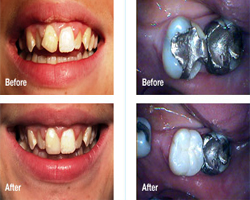
For those with great teeth, a simple smile can express so much. And a confident smile can become your signature!
Yet, many people hide behind a smile that is less than flattering. Being unhappy with your teeth or smile can be an all-consuming process that affects your job environment, your personal relationships and even your personality. Did you know that most people with great smiles were not born that way? They took corrective action. Today, there are tremendous advancements in technology and procedures that can dramatically enhance your smile. Nobody should have to mask or hide an unattractive smile anymore. Esthetic Dentistry Pittsburgh is the area's leading authority offering a wide range of services that will put the "wow in your smile".
Sometimes use a small sheet of rubber on a metal frame (rubber dam) to target the decayed tooth and to stop liquid and tooth chips from entering your mouth and throat. Drill out all the decay and replace it with a filling.
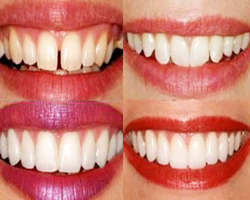
The procedure is necessary to remove the plaque and tartar (grey, yellow, brown hard deposits on the teeth near the gums) which are one of the major reasons that cause gum disease.
A few minutes after brushing, a very thin layer made up of saliva, proteins, and bacteria (also called the pellicle) is formed on the tooth surface which acts as a base for bacterial attachment and growth. Within a few hours the accumulation of various species of bacteria along with sugar from the food we eat results in formation of a pale yellow or white sticky substance known as dental plaque. This if left on the teeth can attract minerals from the saliva and harden causing tartar. Both these are detrimental for the health of the gums and can cause gum disease, which on progressing, can manifest as periodontal disease. Professional cleaning or scaling helps remove these and reverses gum disease or prevents the progression to periodontal disease.
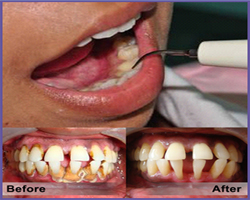
Historically, dental extractions have been used to treat a variety of illnesses, as well as a method of torture to obtain forced confessions. Before the discovery of antibiotics, chronic tooth infections were often linked to a variety of health problems, and therefore removal of a diseased tooth was a common treatment for various medical conditions. Instruments used for dental extractions date back several centuries. In the 14th century, Guy de Chauliac invented the dental pelican,[1] which was used through the late 18th century. The pelican was replaced by the dental key which, in turn, was replaced by modern forceps in the 20th century. As dental extractions can vary tremendously in difficulty, depending on the patient and the tooth, a wide variety of instruments exist to address specific situations.
